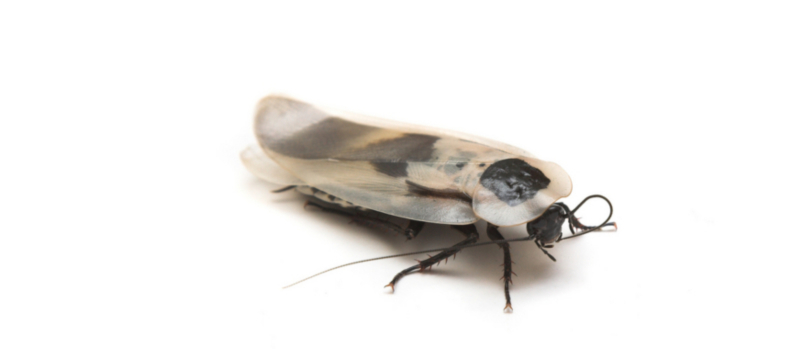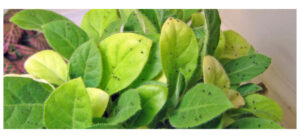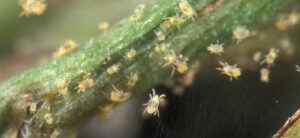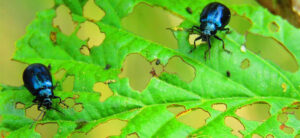
Palmetto bugs, often mistakenly referred to as cockroaches, are a common nuisance in many gardens. These resilient insects thrive in warm and humid environments, making gardens an ideal habitat. Lets look into the world of palmetto bugs and distinguish them from true cockroaches. Lets explore their size and habits, and discuss effective strategies to keep these pests at bay.
Understanding Palmetto Bugs vs Cockroaches:
The term "palmetto bug" is commonly used to describe large cockroach species. Similarly, cockroaches are commonly called palmetto bugs. Specifically, the American cockroach and the Florida woods cockroach.
Both palmetto bugs and cockroaches can share certain characteristics. It is essential to tell the difference between them to employ appropriate control measures.
Size and Appearance:
Palmetto bug size is generally larger than the common household cockroach. Adult American cockroaches can reach lengths of 1.5 to 2 inches long. Florida woods cockroaches may grow even larger.
Their reddish-brown color and distinctive markings set them apart from smaller cockroach species. Understanding the size of palmetto bugs is crucial for identifying and addressing infestations in your garden.
Water Bug vs Cockroach:
The confusion between water bugs and cockroaches, including palmetto bugs, often arises due to their similar appearances. Water bugs are actually a type of true bug that thrives in aquatic environments.
Actual cockroaches on the other hand prefer warm, humid areas. Being a type of cockroach, these bugs are adapted to both indoor and outdoor environments. This makes them particularly challenging pests in gardens.
Habits and Habitat:
Palmetto bugs are attracted to areas with abundant moisture, decaying organic matter, and warmth. Gardens provide an ideal environment for these insects to thrive, as they feast on plant debris and organic material. Unlike some cockroach species that primarily inhabit indoor spaces, palmetto bugs are comfortable outdoors, making gardens susceptible to infestations.
How to Identify Different Species of Cockroaches:
The American cockroach is one of the most common pests infesting homes in the United States. These reddish-brown cockroaches are large and fast, making it quite the nuisance for homeowners. American cockroaches reproduce quickly. They also live longer than most, with an average lifespan of two years.
The most common cockroach in the world, the German cockroach causes a lot of problems. While they struggle to survive in colder climates, they easily find shelter. They tend to invade commercial buildings such as restaurants and hotels. Their color varies from a light brown to near black, with a half-inch body that allows them into small and tight spaces. This roach reproduces faster than any other roach.
Commonly referred to as the “Black Beetle,” the Oriental cockroach carries a darker color. Its color can range from brown to nearly all black. This particular roach loves the water, seeking out moist locations such as sewers, sinks, drains, bushes and leaf piles. Oriental cockroach infestations can be difficult to deal with, as they lay their egg cases in small, hard-to-reach places.
The smokybrown cockroach is very common in Japan, as well as the southeastern United States and tropical climates. It can mainly be found in South Carolina and Florida. The Smoky Brown cockroach can also be found in Australia, such as in warmer cities like Sydney and Brisbane. Most notably in South America, these cockroaches are seen in Argentina to Paraguay.
How to Get Rid of Palmetto Bugs:
- Maintain a Clean Garden: Regularly clean up debris, fallen leaves, and other organic matter in your garden. This reduces the attractive habitats for palmetto bugs and minimizes their food sources.
- Reduce Moisture Levels: Palmetto bugs are drawn to moist environments. Ensure proper drainage in your garden, fix leaky hoses, and avoid giving plants too much water. This will make the garden less hospitable for these pests.
- Natural Predators: Introduce natural predators, such as certain types of parasitic wasps, to your garden. These predators can help control palmetto bug populations without resorting to chemical interventions.
- Use Diatomaceous Earth: Sprinkle food-grade diatomaceous earth around the perimeter of your garden. This natural substance damages the body of insects, including palmetto bugs, leading to their dehydration and eventual demise.
- Insect Soaps and Oils: Apply insect soaps or oils to plants in your garden. These products are effective against palmetto bugs and other garden pests while being less harmful to beneficial insects.
Combatting palmetto bugs in your garden requires an approach that involves understanding their habits. You need to distinguish them from other insects and employ effective control strategies.
Need help determining a pest control game plan to manage palmetto bugs in your garden or house? Call one of our experience growers at 888-815-9763 with any questions you may have.
















